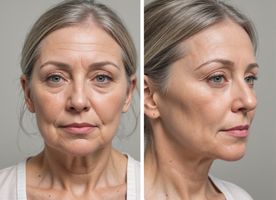Areola Reduction in Brazil
Search and Compare the Best Clinics and Doctors at the Lowest Prices for Areola Reduction in Brazil



































































































































































No Time?
Tell us what you're looking for and we'll reach out to the top clinics all at once
What does a Areola Reduction Procedure Involve?
Before areola reduction begins, an anesthesiologist will give you a local anesthetic. With this type of anesthetic, you will be awake but the affected area will be numbed, so you will not feel any pain. In some cases, you will be given general anesthetic instead, which will put you to sleep.
Next, your doctor will create a circular incision along the perimeter of your areola, where the surgical scar can be more easily hidden, and cut out any extra tissue. Then, the new shape of your areola will be secured with a permanent suture inside your breast. This suture can prevent your areola from stretching. Finally, dissolvable or removable stitches will be used to close the incision site and your surgeon will bandage the area. You will also be fitted with a special post-surgical bra.
How Long Should I Stay in Brazil for a Areola Reduction Procedure?
You should be able to leave the hospital on the day of surgery. Still, it is advisable that you stay in Brazil for 2 to 3 days to let your body recover before traveling home. Some surgeons may also schedule a follow-up checkup to monitor your healing and remove your stitches (if removable stitches are used). In this case, you may need to stay for a week. It’s vital to be in close proximity to your clinic during this period for immediate post-op assessments, stitching removals, and consultations
What's the Recovery Time for Areola Reduction Procedures in Brazil?
Areola reduction has a relatively quick recovery time. You may experience some bruising and swelling for the first few days following your surgery, but you can usually go back to work within a day or two if you have an office job. However, it is important to remember that you need to avoid intense activities, such as exercise and heavy lifting, for at least 3 weeks following your surgery.
It's also imperative to follow your surgeon’s instructions diligently for a swift wound healing process. Lifestyle factors such as good nutrition, regular exercise, and abstaining from harmful habits like smoking can also notably speed up recovery
What sort of Aftercare is Required for Areola Reduction Procedures in Brazil?
Your surgeon will give you post-operative instructions, which include restrictions on activity and how to take care of your surgical wounds. Here are a few things that might be included in the instructions:
-
Take pain medicine as prescribed to help with the pain and discomfort that you may feel during the first couple of days of surgery. If your surgeon does not prescribe pain medication, you can take over-the-counter pain medications, such as ibuprofen (Advil).
-
Ask a friend or family to help you during the initial recovery period because you will need help moving around. Even simple tasks can be quite difficult on the first day or two following your surgery.
-
Sleep on your back during the first week of your recovery to avoid injuring or putting excess strain on your chest.
-
Wear a post-surgical bra or a soft sports bra for at least two weeks. These can protect the area and position your nipples for optimal healing. Tell your medical team if your post-surgical bra is too tight as it can lead to healing complications.
-
Avoid sex for about a week.
-
Avoid physical chest contact for about three to four weeks following your surgery.
What's the Success Rate of Areola Reduction Procedures in Brazil?
Areola reduction is a very safe procedure. Since it is a relatively simple cosmetic procedure, the success rates are very high and most people who have the procedure reported that they are satisfied with the results. It is important to note, however, that it may take a few weeks before you can appreciate the results. The results can be obscured by the initial period of bruising and swelling. Rresults are normally permanent, resulting in a more proportionate areola in harmony with the size of the breasts, with a reduced risk of looking 'stretched' after pregnancy or breastfeeding.
Are there Alternatives to Areola Reduction Procedures in Brazil?
There are a few options to the Areola Reduction that might be taken into account based on personal requirements. For instance, non-surgical procedures like dermal fillers can improve the size and form of your nipples and areolas, albeit these results are transient. The areola can also be reduced by therapies like hormone or oestrogen therapy for people who choose non-invasive treatment choices. These choices, however, each come with a unique mix of benefits and drawbacks. It is advised that you thoroughly examine all of your alternatives with your surgeon in order to make an informed decision.
This information has been accurately sourced and verified by a medical professional for its accuracy, however, we strongly recommend you to consult with your doctor before pursuing medical procedures overseas.









